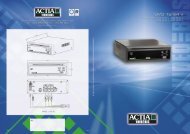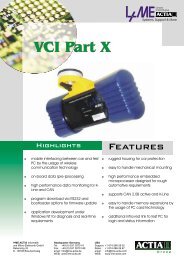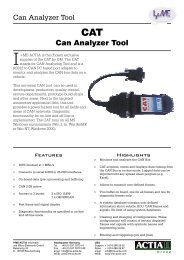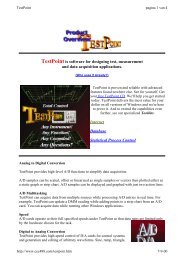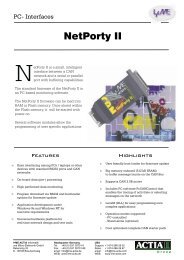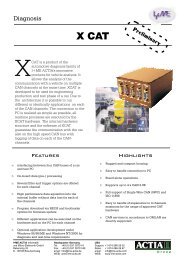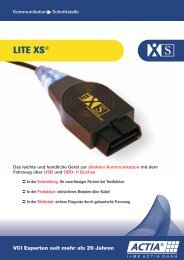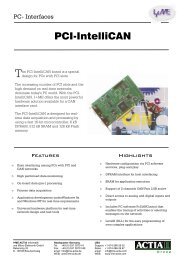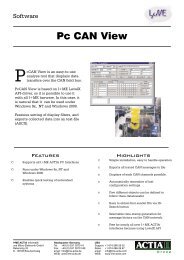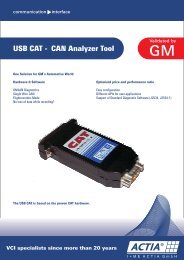User´s Manual - I+ME ACTIA GmbH
User´s Manual - I+ME ACTIA GmbH
User´s Manual - I+ME ACTIA GmbH
Create successful ePaper yourself
Turn your PDF publications into a flip-book with our unique Google optimized e-Paper software.
Device Control<br />
The purpose of the service Device Control ($AE) is to allow CAT to override normal output control<br />
functions in order to verify proper operation of a component or system, or to reset/clear variables used<br />
within normal control algorithms.<br />
Manipulating predefined bits and/or bytes within a message, to indicate to the device which outputs or<br />
control functions the tool wants to override, performs device control. The first data byte (after the<br />
service identifier) of a device control request message is a Control Packet Identifier (CPID). The<br />
remaining 5 bytes are used to provide output control information. However, it is not required that a<br />
CPID contains 5 bytes of control information. CAT will send out only as many data bytes as defined.<br />
CAT allows setup up to 10 CPIDs and the assigned CPID Control Bytes. Therefore the Setup button in<br />
the Main Diagnostic Setup window could activate the dialog box shown below.<br />
Note: This service should only be requested using physical addressing. See the Main Diagnostic<br />
Setup window for details about addressing.<br />
Request to known ECU<br />
If there is an ECU addressed that is contained in the Database, the CPID Table contains the predefined<br />
CPID and Control Data. But CAT allows modifying the existing entries. Put in the required CPID and<br />
control bytes. Use the radio buttons to select the CPIDs that shall be requested. Acknowledge the<br />
settings by OK.<br />
Request to unknown ECU<br />
142




